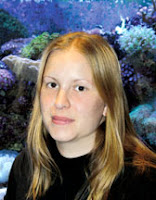Sponges are animals? Believe it or don’t. Most of us are familiar with the dried colorless varieties that populate the kitchens and bathrooms of the world, or worse, the cellulose fakers that our children believe dwell in pineapples at the bottom of the ocean. But that’s not what sponges are at all. To me, they are some of the most fascinating and fun sea creatures. Fun? Well, they may not actually do anything, but in the home aquarium, they are “fun” in the aspect that they are beautiful and challenging to keep. They are remarkably adaptive, and if purchased healthy many not only survive in reef tanks, but can grow well and reproduce.
“Sponge” refers to the animals classified in the phylum Porifera; which means loosely “bearer of pores”. The first type of sponges that most aquarists encounter in their aquariums belong to the class Calcarea. These little guys are the tiny little sponges you’ll find in your sump, on the standpipes, and bopping around in the bio-tower or skimmer output. They are about the size of a large grain of rice with a fine, funnel-like extension at one end. They don’t hurt anything, so if you are new at this, don’t be alarmed.
Those sponges most commonly sold in the trade as ornamental sponges belong to the class Demospongiae. They are variable in form and color – from branching blue to orange paddles, to yellow or red balls. Others in this group that are not sold, but most reefers see in their aquarium are amorphous, encrusting species in colors of white, yellow, pink or black.
Sponges are one of the most primitive animals in the sea, yet are far more complex than most hobbyists are aware. All sponges differ from other marine invertebrates in that they have no true tissues or organs. Their structure is made up of silica based spicules and/or collagenous spongin. Most sponges are constant filter feeders with little need for lighting. To feed, sponges pump an incredible amount of water through their bodies. The uni-directional flow allows the sponge to absorb fine food particles (most not larger than 1.5 micron!) and release wastes back into the water column. It’s nutrition by diffusion, Cool Thing #1! As the sponge grows, it will modify its surface and cavities to optimize the water flow around and through it. For this reason, once a sponge settles in a spot in your aquarium, it is best not to move it.
Not all sponges are obligate filter feeders. There is a group of calcareous sponges, like my current favorite, the blue finger sponge, which are moderately photosynthetic (due to symbiotic cyanobacteria) as well as filter feeders. Use high light, high water flow, and don’t forget your calcium!
A note about purchasing sponges; Do not ever EVER remove them from the water. If you remove them, air bubbles become trapped in the body cavities and there is no way to purge the air so those cells will die. When buying, look for uniformity, no transparent or fuzzy spots. Don’t buy sponges with necrotic tissue, unless you are brave and willing to eat the cost, as many retailers will not guarantee sponges. If the sponge is new, and it was exposed in shipping, it may not show dead tissue for a while. If after a few days you see some of your new sponge dying, just cut off the bad spot. Sponges have remarkable regenerative abilities due to Cool Thing #2: Totipotent Cells. Think Stem Cells. These cells can revert to any type of cell needed to ensure the regeneration of the sponge.
I feel I should include Cool Thing #3 even though it’s not really related to the hobby but it’s cool nonetheless: Sponges are one of the most chemically rich resources identified to date. They’re packed full of biochemicals that are currently the basis of the majority of new pharmaceutical research. Products from anti-inflamitories to anti-cancer agents have been derived from sponges. But that’s a different blog.
I hope I’ve manage to convince you of the hidden charm and FUN of poriferans, and I encourage aquarists who want to attempt keeping sponges to research them further and to go ahead and try them out!
 That Fish Blog – Aquarium Advice and Information
That Fish Blog – Aquarium Advice and Information


